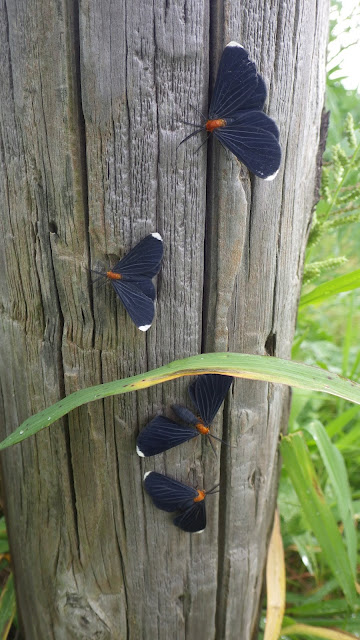This week several of you have been able to get into the fields. I know we've had spotty rainstorms all up and down our area, and some places still have not dried out (I'm looking at you, Danevang). The weather forecast for this weekend is not looking great for us either, but I'm hoping it won't rain on us. The gins are running, and the cotton they've gotten in has been going through so far. The big thing we need to watch for is making sure the lint and the seed are dry before picking (lint at 8% and seed below 12%). The wet seed sitting in a module could cause us issues down the road, as wet lint and seed can continue to degrade while sitting in a module. Cotton Incorporated developed an article on picker harvest recommendations that includes a section on timing a moisture considerations here. The southeastern U.S. dealt with a similar situation last year, take a look at those articles: Cotton Quality Affected by Late Rainfall and Seed Sprouting Observed. I know it looks bad in some places, but we really won't know for sure what everything will look like until we get it out and to the gins. Very little of the rained on cotton has been ginned and classed, so we have very little information on that for this year. To my knowledge, the seed quality and lint quality has been pretty good so far, given the situation.
If you are looking at defoliating, or defoliating regrowth (again), recent harvest aid trials show bot Folex (6-8 oz/acre) and Ginstar (3-4 oz/acre) in combination with 1.6- 2.4 oz/acre Dropp have provided good control of young vegetative regrowth, but are less effective on mature leaves. The PPO products will work well on small regrowth and provide some drying down. Paraquat is the lest effective option for removing small regrowth, but is still an effective option for desiccating cotton prior to harvest.
Gaylon Morgan's Row Crops Newsletter covers some of the information here as well as others, check it out here.
 |
| White-tipped black Photo: Kate Harrell |
As always, let me know if you have questions, and don't hesitate to stop by the office or give us a call. Have a good weekend, and I hope the cotton dries out.
Sincerely,
Kate Harrell
 |
| White-tipped black Photo: Kate Harrell |
 |
| White-tipped black caterpillar Photo: Karen Anthonisen Finch bugguide.net |

No comments:
Post a Comment